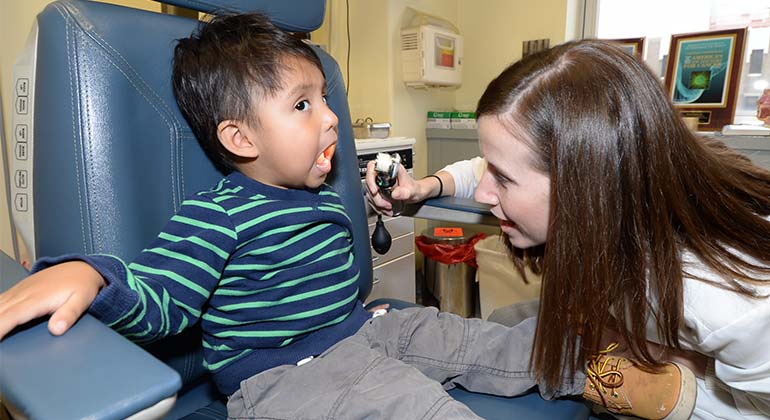Introduction to Craniofacial Anomalies
Craniofacial anomalies, also known as congenital facial abnormalities, encompass a wide range of conditions that affect the structure and appearance of the face and skull at birth. These anomalies can vary from minor cosmetic differences to more severe malformations that can impact both physical and psychological well-being. While each case is unique, advancements in medical and surgical techniques have made it possible to correct these abnormalities and provide individuals with an improved quality of life.
Surgical Correction of Congenital Anomalies Facial Abnormalities
Surgical correction plays a crucial role in addressing congenital facial abnormalities. With the help of skilled surgeons and innovative approaches, individuals born with craniofacial anomalies can witness transformative changes to their appearance and functionality. Here, we delve into the different techniques used for surgical correction:


1. Craniofacial Reconstruction
Craniofacial reconstruction focuses on the correction of abnormalities affecting the skull and facial bones. In cases where there is a deficiency in bone growth or abnormal development, surgeons employ sophisticated procedures to reshape and realign the affected structures. From complex cranial vault remodeling to precise osteotomies, surgical interventions have the potential to improve both the aesthetic and functional aspects of the patient’s face.
2. Soft Tissue Repair and Restoration
In addition to bone reconstruction, addressing soft tissue abnormalities is equally vital in achieving optimal outcomes. Procedures such as cleft lip and palate repair, along with scar revision surgeries, help enhance facial symmetry and improve oral functions like speech and eating. Surgeons skillfully manipulate and reposition tissues, meticulously stitching them together to create a harmonious facial appearance while providing functional benefits.
3. Nasal Reconstruction
Abnormalities involving the nasal region can significantly impact an individual’s breathing, sense of smell, and overall facial aesthetics. Nasal reconstruction involves complex procedures, including rhinoplasty and septoplasty, to reshape and realign the structures within the nose. By addressing both functional and cosmetic aspects, surgical correction helps individuals achieve a balanced and seamless nasal profile, improving their overall facial harmony.
Collaborative Care in Treating Craniofacial Anomalies Syndromes
The treatment of craniofacial anomalies involves comprehensive and collaborative care from a multidisciplinary team of healthcare professionals. By working together, these experts ensure a holistic and tailored approach to address the unique needs of each patient. Let’s explore the aspects of collaborative care in treating craniofacial syndromes:
1. Pediatric Specialists
The journey begins with pediatric specialists who play a pivotal role in the early diagnosis and management of craniofacial anomalies. These specialists, including pediatricians and geneticists, work closely with the family to assess the underlying causes and potential associated conditions. Their expertise helps guide the treatment plan and ensures comprehensive care from infancy through adolescence.
2. Plastic Surgeons
Plastic surgeons with specialized training in craniofacial anomalies are at the forefront of surgical interventions. They possess the skills and knowledge required to navigate the intricacies of each case, aligning the aesthetic and functional goals to achieve optimal outcomes. Their collaboration with other specialists ensures a multidimensional approach to treatment, addressing both the immediate concerns and long-term well-being of the patient.
3. Speech-Language Pathologists
For individuals with craniofacial syndromes, speech and language development can be significantly impacted. Speech-language pathologists (SLPs) work closely with patients to address communication difficulties, articulation disorders, and swallowing abnormalities. Through targeted therapy and interventions, SLPs play a crucial role in helping individuals overcome these challenges and improve their overall quality of life.
Conclusion
The treatment of craniofacial anomalies represents a convergence of medical advancements, collaborative care, and individualized approaches. The field continues to evolve, offering individuals born with these conditions renewed hope for a brighter future. By embracing innovative surgical techniques and leveraging the expertise of a multidisciplinary team, we can help individuals with craniofacial anomalies achieve their full potential and lead fulfilling lives. Remember, every person’s journey is unique, and the journey to surgical correction and collaborative care serves as a testament to the resilience and strength of individuals faced with craniofacial anomalies.
What are Craniofacial Anomalies?
What Causes Craniofacial Anomalies?
How are Craniofacial Anomalies Diagnosed?
What Surgical Options are Available for Craniofacial Anomalies?
Can Craniofacial Anomalies be Prevented?
What Support is Available for Families of Individuals with Craniofacial Anomalies?
Are you searching for the best orthodontists , Visit Dent-O-Face
let know our doctor or go to
